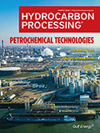Desulfurization
Digital Exclusive: Refineries’ pandemic turmoil—KNPC’s gasoline demand: Opportunities and challenges
In this exclusive digital article, KNPC provides a comprehensive analysis of the difficulties and challenges that the company experienced during the COVID-19 epidemic and how its refineries adapted during this challenging time.
Editorial Comment: Advancing catalyst technologies and a focus on plant optimization/efficiency
For nearly 100 yr, catalysts have been used within the processing industries.
Business Trends: Tier 3 gasoline production: The value of flexibility in volatile fuel markets
Despite the forecasted trend of declining demand for transportation fuels, many markets still depend heavily on these crude oil derivatives to sustain economic activity.
VOC reduction at Raffineria di Milazzo’s SRU complex—Part 2
Based on new environmental regulations focusing on volatile organic compounds (VOCs) at the emissions point of a refinery’s sulfur recovery unit (SRU), Raffineria di Milazzo—a JV between Eni and Kuwait Petroleum Italia—carried out troubleshooting activities to identify and implement suitable actions to minimize the concentration of VOCs at the emissions point of the SRU complex.
Lukoil has begun ship-to-ship loadings of ULSD
Russian oil producer Lukoil has started ship-to-ship (STS) loadings of ultra-low-sulfur diesel (ULSD) off its western exclave of Kaliningrad.
U.S. EPA's proposal would allow a higher ethanol blend in Midwest states
The U.S. Environmental Protection Agency proposed a rule that would allow sales of gasoline with a higher ethanol blend in certain U.S. Midwest states.
VOC reduction at Raffineria di Milazzo’s SRU complex—Part 1
Based on new environmental regulations focusing on volatile organic compounds (VOCs) at the emissions point of a refinery’s sulfur recovery unit (SRU), Raffineria di Milazzo—a JV between Eni and Kuwait Petroleum Italia—carried out troubleshooting activities to identify and implement suitable actions to minimize the concentration of VOCs at the emissions point of the SRU complex.
Kuwait to ramp up refined products exports from the 615,000-bpd Al Zour refinery
Kuwait is set to ramp up refined oil product exports from its new Al Zour refinery in the second half of 2023 to plug Russian shortfalls in Europe and meet growing demand in Asia and Africa.
Business Trends: Tier 3 gasoline production: Challenges and opportunities for refiners
One of the biggest challenges to the crude oil refining industry over the past decades is the development of technologies capable of reducing the environmental impact of crude oil derivatives, while also raising their performance.
Kuwait's Al Zour offers more low-sulfur fuel oil for February-April
Kuwait has issued a tender offering three low-sulfur fuel oil (LSFO) cargoes for loading between February and April from its Al Zour refinery, industry sources said this week.

- China's Wanhua Chemical starts operation at new east China cracker 4/4
- Brookfield Infrastructure announces the acquisition of Colonial Enterprises for $9 B 4/4
- PBF restarts some units at Martinez refinery after February fire; fire-damaged units remain shut 4/4
- Japan to curb gasoline prices from June to cushion U.S. tariff blow 4/4
- Evonik presents innovative "Debonding on Demand" concept for more sustainable bonding 4/3
- Oil, gas and refined product imports exempted from Trump’s sweeping tariffs 4/3




